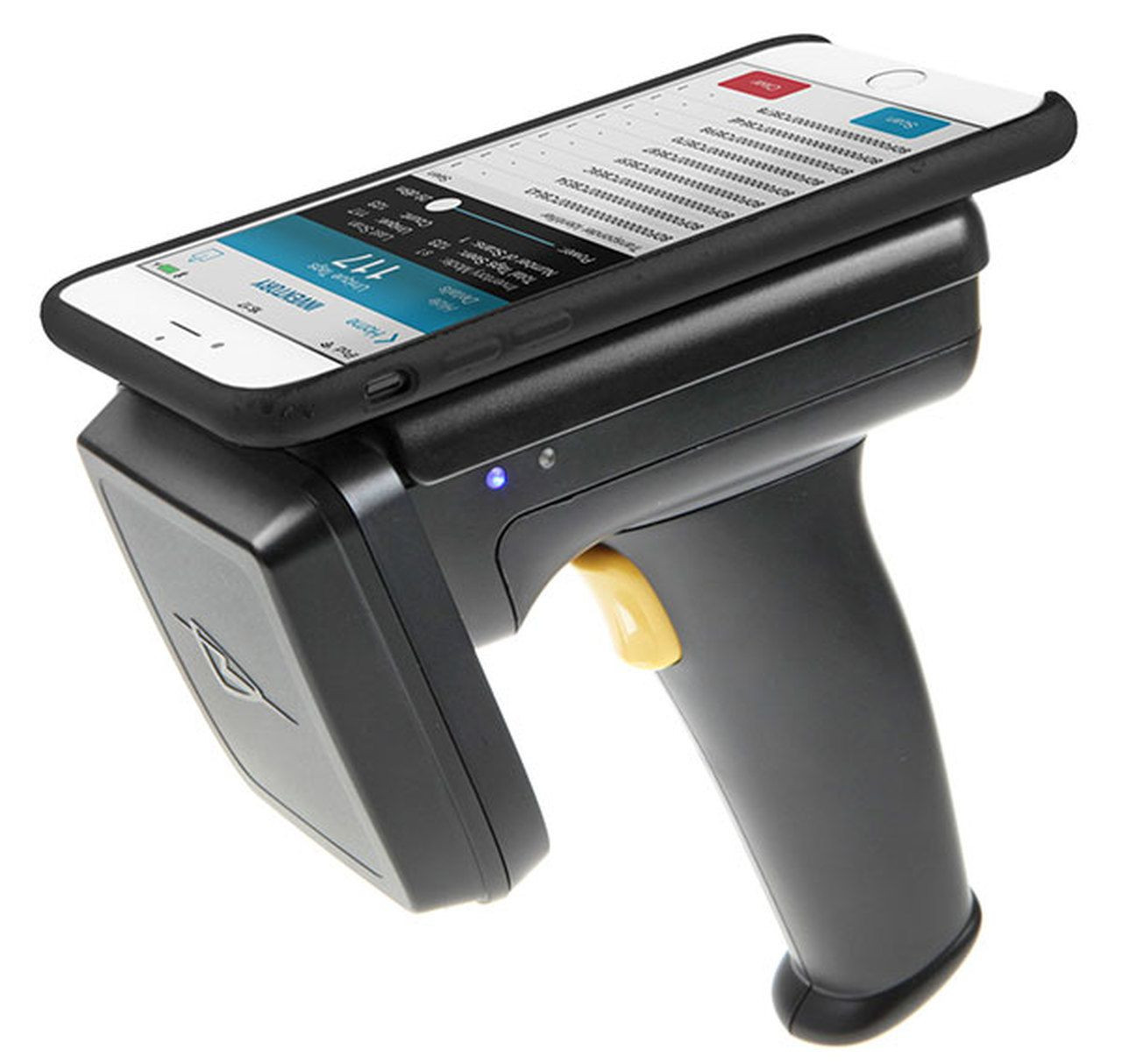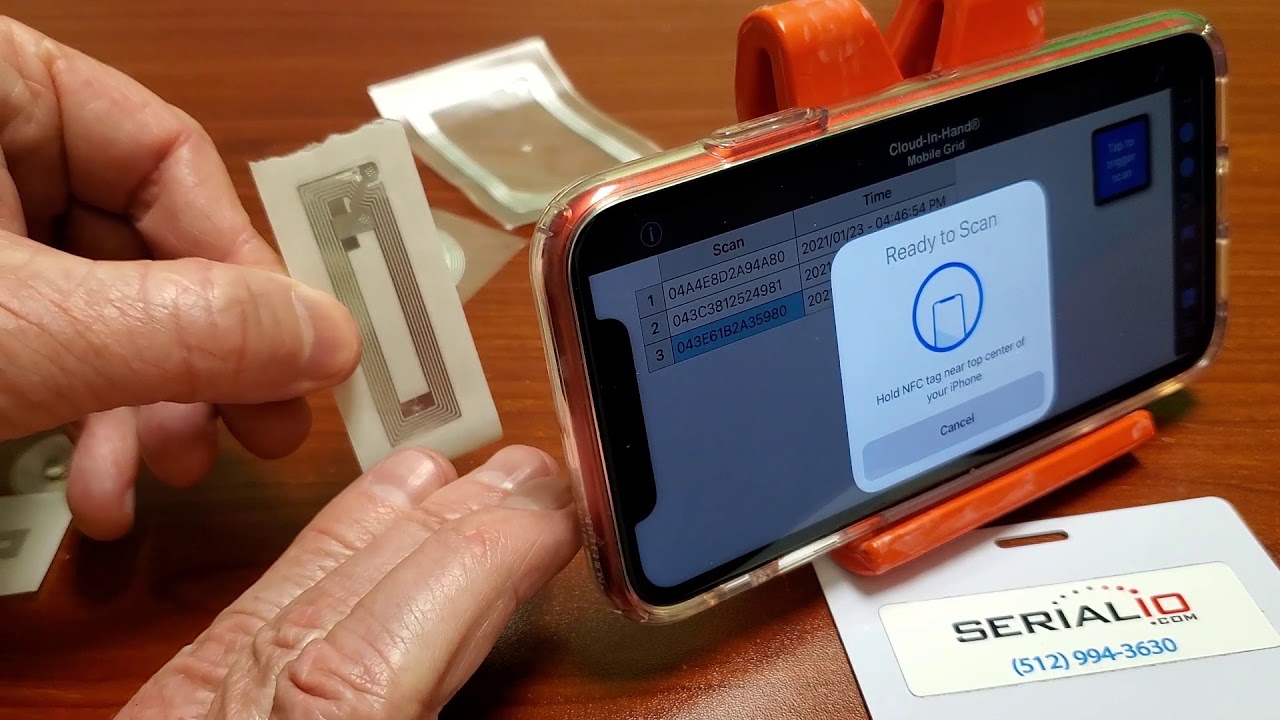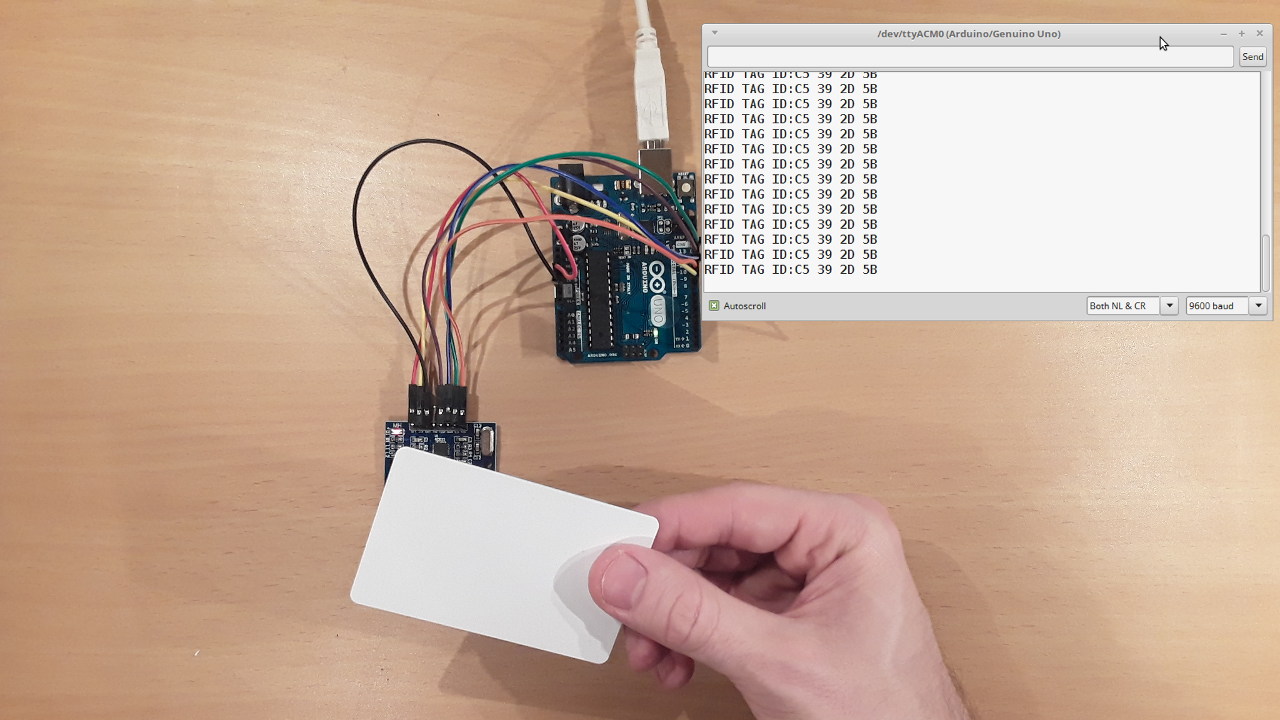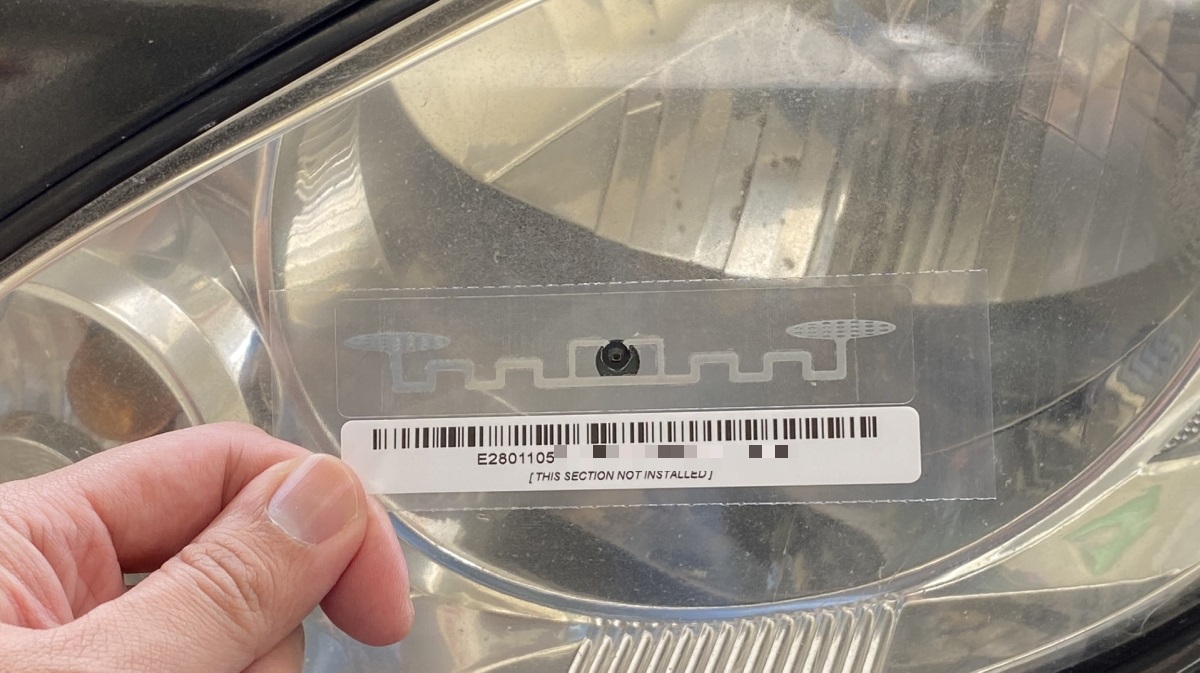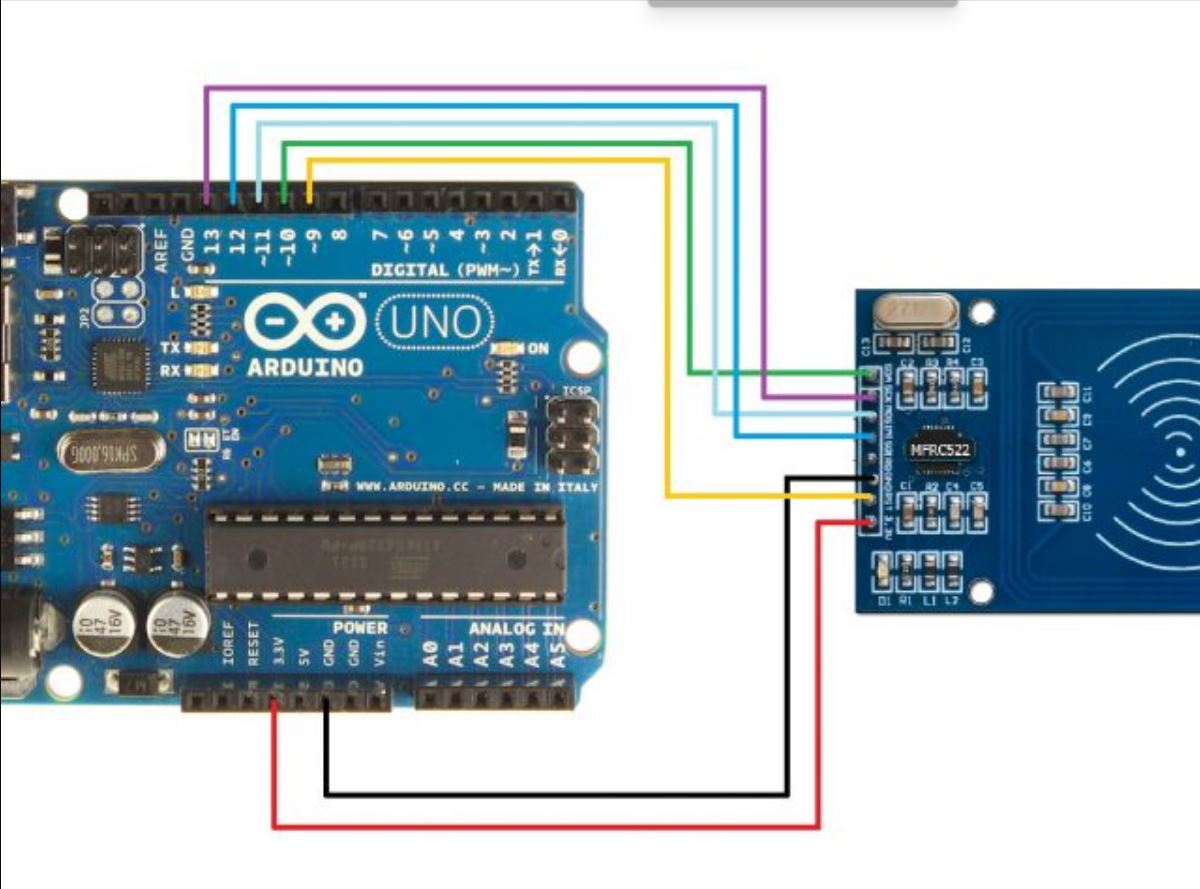Introduction
Radio Frequency Identification (RFID) technology has revolutionized various industries by providing a means of automatic identification and tracking. With RFID, items can be identified and tracked using radio waves, eliminating the need for manual scanning.
RFID technology consists of two main components: RFID tags and RFID readers. The tags are affixed to the items being tracked, and the readers are used to capture the data stored in the tags. This technology has numerous applications, ranging from inventory management in retail to tracking livestock in agriculture.
One of the questions that often arises in relation to RFID technology is how far the RFID tags can be read. The read range of RFID tags refers to the maximum distance at which the readers can successfully capture the data from the tags. Understanding the read range is crucial for implementing RFID systems effectively and optimizing their performance.
In this article, we will delve into the factors that affect the read range of RFID tags, explore the different types of RFID tags, and discuss how to improve the read range for optimal performance. Whether you are a business owner, an RFID enthusiast, or simply curious about this technology, this article will provide you with valuable insights into the capabilities and limitations of RFID read ranges.
What is RFID?
RFID, short for Radio Frequency Identification, is a technology that uses radio waves to identify and track objects. It consists of tags, which are small electronic devices that can store and transmit data wirelessly, and readers, which are devices that capture and interpret the data from the tags.
RFID technology operates on the principle of electromagnetic fields. The RFID tags contain a microchip that stores information about the item being tracked. This information can range from a simple identification number to more complex details like product specifications or maintenance history.
When a reader sends out a radio signal, the RFID tag within its range detects the signal and responds by transmitting its stored data back to the reader. The reader then collects and processes this data, enabling businesses to monitor and manage their assets efficiently, streamline inventory management, and enhance supply chain visibility.
One of the key advantages of RFID technology is that it can function without direct line-of-sight. Unlike barcodes, which require a clear line of sight for scanning, RFID tags can be read even when they are not visible or buried within objects. This makes RFID ideal for asset tracking, inventory management, and other applications where physical contact or visibility may be limited.
RFID technology is widely used across various industries. In retail, it enables efficient inventory control, theft prevention, and quick checkout processes. In logistics and supply chain management, it facilitates real-time tracking, improves shipment accuracy, and enhances delivery efficiency. In healthcare, it helps manage medical equipment, track patients, and ensure the safety and accuracy of medication administration.
In summary, RFID technology provides a seamless and reliable method of identifying and tracking objects using radio waves. By harnessing its capabilities, businesses can gain real-time visibility into their assets, streamline operations, and make data-driven decisions for enhanced efficiency and productivity.
The Basics of RFID Technology
RFID technology encompasses a system of radio frequency-based identification and tracking. It consists of three main components: RFID tags, RFID readers, and a backend system for data processing and analysis.
RFID Tags: RFID tags are small electronic devices that are attached or embedded into the objects or assets being tracked. These tags contain an integrated circuit (IC) that stores data and an antenna that enables communication with RFID readers. There are different types of RFID tags available, including passive, active, and semi-passive tags.
RFID Readers: RFID readers, also known as interrogators, are devices that emit radio waves and capture the data transmitted by RFID tags. They consist of an antenna to emit and receive signals and a transceiver to encode and decode data. RFID readers can be fixed or handheld, depending on the application requirements.
Data Processing and Analysis: The collected data from RFID readers is typically processed and analyzed using a backend system. This system manages the communication between the readers and the tags, stores and retrieves the collected data, and provides a user interface for accessing and analyzing the information.
The functioning of RFID technology involves a four-step process:
- Tag Identification: When an RFID reader emits a radio signal, the nearby RFID tags within the reader’s range detect the signal and respond by transmitting their unique identification code or data back to the reader.
- Data Capture: The RFID reader captures the transmitted data from the tags using its antenna and transceiver.
- Data Processing: The collected data is then processed by the backend system. This may involve filtering, validating, and correlating the data to ensure accuracy and reliability.
- Data Utilization: The processed data can then be utilized for various purposes such as inventory management, asset tracking, access control, or any other application specific to the industry or business.
One of the significant advantages of RFID technology is its ability to read multiple tags simultaneously, making it highly efficient for high-volume and real-time tracking applications. Additionally, RFID systems provide greater accuracy and reliability compared to traditional barcode systems, as they are not prone to errors caused by line-of-sight scanning or damaged labels.
Overall, RFID technology offers a powerful and flexible solution for asset identification and tracking. Its ability to automate data capture, enable real-time visibility, and streamline operational processes makes it an invaluable tool across various industries.
RFID Read Ranges Explained
The read range of RFID tags refers to the maximum distance at which RFID readers can communicate and capture data from the tags. It is an essential factor to consider when implementing an RFID system and depends on several variables, including the type of RFID technology and the environment in which it operates.
The read range of RFID systems can vary greatly. In general, passive RFID tags have a shorter read range compared to active or semi-passive tags. The read range for passive tags typically ranges from a few centimeters up to several meters, depending on factors such as the frequency used, the power of the reader, and the size and sensitivity of the tag’s antenna.
Active RFID tags, on the other hand, are powered by a battery and have a more extended read range. The read range of active tags can extend up to hundreds of meters, enabling long-distance tracking and identification. This extended range makes active RFID suitable for applications such as vehicle tracking, asset management, and personnel tracking.
Semi-passive RFID tags combine characteristics of both passive and active tags. They are powered by a battery for internal operations but rely on the reader’s energy to communicate. The read range of semi-passive tags lies between that of passive and active tags, typically ranging from a few meters to tens of meters.
However, it is important to note that the specific read range achieved in practical applications may vary due to environmental factors. Various elements can impact RFID read range, including interference from other radio signals, physical obstructions, and the type of surface the tag is attached to.
For example, the presence of metal surfaces or liquids can significantly reduce the read range of RFID tags. Metal and liquids can absorb or reflect the radio waves, making it challenging for the reader to receive signals from the tags accurately.
Additionally, the frequency band used in RFID systems also affects the read range. Generally, lower-frequency RFID systems have a longer read range compared to higher-frequency systems. Low-frequency RFID systems typically operate at 125 kHz or 134 kHz and offer a read range of a few centimeters to a few meters. In contrast, high-frequency RFID systems, operating at 13.56 MHz, have a shorter read range of a few centimeters to approximately one meter.
In summary, the read range of RFID tags depends on the type of tags used, the power of the reader, the frequency band utilized, and the environmental conditions. Understanding these factors is crucial for selecting the appropriate RFID technology and optimizing the read range for specific applications.
Factors Affecting RFID Read Range
The read range of RFID tags can be influenced by several factors, ranging from technical aspects to environmental conditions. Understanding these factors is essential for optimizing the performance and reliability of RFID systems. Here are the key factors that affect RFID read range:
- RFID Frequency: The frequency band used in RFID systems plays a significant role in determining the read range. Generally, lower frequencies offer a longer read range compared to higher frequencies. Low-frequency RFID systems operating at 125 kHz or 134 kHz typically have a read range of a few centimeters to a few meters. In contrast, high-frequency systems operating at 13.56 MHz often have a shorter read range, typically a few centimeters to approximately one meter.
- RFID Power: The power output of the RFID reader can impact the read range. Higher-powered readers can transmit signals over longer distances, thereby extending the read range. However, it is important to comply with regulatory guidelines and restrictions related to RF power output to ensure safe and legal operation.
- RFID Antenna Design: The design and characteristics of the RFID antennas used in both the tags and readers can affect the read range. Antennas with higher gain and directional properties can improve the read range by increasing the sensitivity and focus of the signal transmission and reception. Additionally, the size, shape, and placement of the antennas can also impact the read range.
- Environmental Factors: Various environmental conditions can affect the read range of RFID systems. Interference from other radio signals, such as Wi-Fi or microwave devices, can disrupt communication between tags and readers, reducing the effective read range. Physical obstructions like walls, furniture, or shelves can also attenuate the radio signals, limiting the read range. Additionally, certain materials like metal or liquids can absorb or reflect the signal, further impacting the read range.
- Tag Orientation and Placement: The orientation and placement of the RFID tags can influence the read range. Tags positioned perpendicular to the reader’s antenna typically offer better read range compared to tags placed flat or at an angle. Additionally, tags attached to materials that do not obstruct the radio waves, such as plastic or cardboard, generally have a more reliable read range compared to tags affixed to metal or liquid surfaces.
- Tag Size and Material: The size and material of the RFID tags can affect the read range. Larger tags typically have larger antennas, resulting in a better read range. Similarly, tags made from materials that do not interfere with radio waves, such as plastic or paper, generally offer a more consistent read range compared to tags made from metal or foil.
By considering these factors and optimizing the RFID system accordingly, businesses can improve the read range, enhance tracking accuracy, and ensure the overall effectiveness of RFID applications.
Types of RFID Tags
RFID tags come in various forms and configurations, each designed to suit specific applications and requirements. Understanding the different types of RFID tags can help businesses select the most suitable option for their tracking and identification needs. Here are the main types of RFID tags:
- Passive RFID Tags: Passive RFID tags are the most common type of RFID tags. They do not have an internal power source and rely on the energy emitted by RFID readers to power up and communicate. Passive tags are cost-effective, lightweight, and ideal for applications such as asset tracking, inventory management, and access control. However, their read range is generally shorter compared to that of active or semi-passive tags.
- Active RFID Tags: Active RFID tags are equipped with their own power source, typically a battery. They can transmit signals and communicate independently of RFID readers. Active tags have a longer read range compared to passive tags, often spanning hundreds of meters. They are commonly used in applications that require long-distance tracking, such as vehicle tracking, container tracking, and real-time location systems.
- Semi-Passive RFID Tags: Semi-passive RFID tags, also known as battery-assisted passive (BAP) tags, combine features of both passive and active tags. They have an internal power source to support their internal circuitry but still rely on RFID readers for communication. Semi-passive tags offer a longer read range compared to passive tags but shorter than active tags. They are commonly used in asset tracking, temperature-sensitive applications, and supply chain management.
- UHF RFID Tags: UHF (Ultra-High Frequency) RFID tags operate using the UHF frequency range of 860-960 MHz. UHF tags are known for their longer read ranges, typically several meters or more. They are widely used in applications such as inventory management, supply chain logistics, and retail tracking. UHF tags can be either passive or active, depending on the specific requirements of the application.
- HF RFID Tags: HF (High Frequency) RFID tags operate in the frequency range of 13.56 MHz. HF tags offer a shorter read range compared to UHF tags, typically a few centimeters to one meter. They are commonly used in applications such as access control, document tracking, and asset management.
- LF RFID Tags: LF (Low Frequency) RFID tags operate in the frequency range of 125-134 kHz. LF tags have a shorter read range compared to both UHF and HF tags, typically ranging from a few centimeters up to a few meters. They are commonly used for applications such as pet tracking, livestock management, and industrial tracking that require a close proximity read range.
Each type of RFID tag offers distinct advantages and is suited for specific use cases. Understanding the characteristics and capabilities of different RFID tags is crucial for implementing reliable and efficient RFID systems.
How Far Can Passive RFID Tags Be Read?
The read range of passive RFID tags, which do not have an internal power source, can vary depending on several factors. These factors include the frequency band used, the power output of the RFID reader, the sensitivity of the tag’s antenna, and the surrounding environment. With these considerations in mind, the typical read range for passive RFID tags is generally between a few centimeters to several meters.
Low-frequency (LF) passive RFID tags, operating at frequencies around 125-134 kHz, typically have a shorter read range compared to higher-frequency tags. The read range for LF tags typically ranges from a few centimeters up to a few meters. LF tags are commonly used in applications such as access control, animal tracking, and vehicle immobilization systems.
High-frequency (HF) passive RFID tags, operating at a frequency of 13.56 MHz, offer a slightly longer read range compared to LF tags. The read range for HF tags typically ranges from a few centimeters to approximately one meter. HF tags are commonly used in applications such as contactless payment systems, asset tracking, and library book management.
Ultra-high-frequency (UHF) passive RFID tags, operating at frequencies between 860-960 MHz, provide the longest read range among passive RFID tags. The read range for UHF tags can vary widely and may range from a few centimeters to several meters or even more, depending on factors such as the power output of the reader and the sensitivity of the tag’s antenna. UHF tags are commonly used in applications such as inventory management, supply chain logistics, and retail tracking.
It is important to note that the read range of passive RFID tags can be affected by environmental factors. The presence of interference from other radio signals, physical obstructions, and the type of surface the tag is attached to can impact the read range. Metal surfaces or liquids can absorb or reflect the radio waves, making it more challenging for the reader to communicate with the tags effectively.
To maximize the read range of passive RFID tags, it is recommended to optimize the positioning and orientation of the tags, utilize high-gain antennas on the readers, and ensure a clear line of sight between the readers and the tags. Additionally, using a higher-powered RFID reader can enhance the read range, but it is important to adhere to regulatory guidelines and restrictions regarding RF power output.
By understanding the capabilities and limitations of passive RFID tags and considering the environmental factors, businesses can effectively optimize their RFID systems and ensure reliable and accurate tracking and identification of their assets or inventory.
How Far Can Active RFID Tags Be Read?
Active RFID tags, which are equipped with their own power source, typically have a significantly longer read range compared to passive RFID tags. The extended read range of active tags is primarily due to their ability to independently transmit signals, allowing for longer-distance communication with RFID readers.
The read range of active RFID tags can vary depending on factors such as the power output of the tag, the sensitivity of the reader, and the surrounding environment. In general, active RFID tags can achieve read ranges ranging from several tens of meters up to hundreds of meters.
Actively powered by an internal battery, active RFID tags are capable of autonomously transmitting signals at regular intervals, allowing for continuous and long-range communication with RFID readers. This extended read range makes active tags suitable for applications requiring tracking and monitoring over larger areas or long distances.
The longer read range of active RFID tags enables a wide range of applications. For example, in vehicle tracking systems, active tags can be used to monitor vehicle movement and location across large parking lots or transportation hubs. In asset tracking applications, active tags can provide real-time location information, making them useful for managing high-value assets or equipment across expansive facilities.
It is worth noting that the actual read range of active RFID tags can also be influenced by factors such as interference from other wireless devices, physical obstructions, and environmental conditions. Radio signals can be weakened or disrupted by metal surfaces, dense structures, or moisture. Therefore, it is important to consider these factors when deploying active RFID systems to ensure optimal performance.
To improve the read range and reliability of active RFID tags, it is essential to select RFID readers with high sensitivity and a clear line of sight to the tags. Utilizing high-gain antennas on both the tags and the readers can also enhance the signal strength and extend the read range. Additionally, optimizing the placement and orientation of the RFID tags can help ensure a more consistent and reliable communication link.
Overall, the extended read range of active RFID tags allows for long-distance tracking and monitoring in various applications. By leveraging their capabilities, businesses can achieve real-time visibility and enhanced control over their assets or monitoring needs.
How Far Can Semi-Passive RFID Tags Be Read?
Semi-passive RFID tags, also known as battery-assisted passive (BAP) tags, offer a read range that falls between that of passive and active RFID tags. These tags feature an internal battery that powers the tag’s internal circuitry, while still relying on RFID readers for communication.
The read range of semi-passive RFID tags can vary based on several factors, including the frequency band used, the power output of the RFID reader, the sensitivity of the tag’s antenna, and the environmental conditions. Typically, the read range for semi-passive RFID tags ranges from a few meters to tens of meters.
The battery inside semi-passive RFID tags helps boost their performance by providing power to the tag’s internal circuitry. This allows for improved sensitivity, faster response times, and an extended read range compared to passive RFID tags.
Similar to passive RFID tags, the read range of semi-passive tags can be influenced by environmental factors. The presence of interference from other radio signals and physical obstructions, as well as the type of surface the tags are attached to, can impact the read range. It is important to account for these factors when deploying semi-passive RFID systems.
In certain applications, such as asset tracking or temperature-sensitive monitoring, semi-passive RFID tags offer a good balance between the extended read range of active tags and the cost-effectiveness of passive tags. They are commonly used in industries such as logistics, manufacturing, and healthcare, where the read range requirements are greater than passive tags but not as extensive as active tags.
To optimize the read range of semi-passive RFID tags, it is important to consider factors such as the power output of the RFID reader and the sensitivity and placement of the tag’s antenna. Utilizing high-gain antennas on the readers can enhance the communication link, while proper positioning and orientation of the tags can ensure reliable and accurate tag reading.
Overall, semi-passive RFID tags bridge the gap between passive and active tags, offering an extended read range while maintaining a balance between functionality and cost. By leveraging their capabilities, businesses can benefit from improved tracking and identification in various applications.
Improving RFID Read Range
Optimizing the read range of RFID systems is crucial for enhancing the effectiveness and reliability of tracking and identification processes. There are several strategies that can be employed to improve the read range of RFID tags and readers:
- Upgrade to Higher Power Readers: Using RFID readers with higher power output can increase the read range. However, it is essential to ensure compliance with regulatory guidelines and restrictions related to RF power output to avoid interference or legal issues.
- Utilize High-Gain Antennas: High-gain antennas can enhance the signal strength and extend the read range. Using high-gain antennas on both the readers and the tags can improve the communication link and minimize signal loss.
- Optimize Antenna Placement: Proper placement and orientation of the RFID tags and readers can maximize the read range. Ensuring a clear line of sight between the reader’s antenna and the tags, as well as avoiding obstructions, can improve signal reception and minimize interference.
- Consider Signal Amplification: Signal amplifiers, also known as boosters or repeaters, can be employed to amplify the signal strength and extend the read range. These devices can be useful in situations where the read range needs to be increased across large areas or environments with signal attenuation.
- Choose the Right RFID Tag: Selecting RFID tags with optimized antenna design and sensitivity can enhance the read range. Tags with larger antennas or specialized designs for specific applications can improve performance in challenging environments.
- Minimize Interference: Interference from other radio signals can impact the read range of RFID systems. It is important to identify and mitigate sources of interference by selecting appropriate frequency bands, avoiding crowded radio environments, and shielding sensitive areas if necessary.
- Consider Environmental Factors: Environmental conditions, such as the presence of metal surfaces or liquids, can affect the read range. Understanding the impact of environmental factors and selecting tags and readers accordingly can help mitigate their effects on read range performance.
Optimizing the read range of RFID systems involves a combination of technical considerations, proper equipment selection, and environmental adjustments. By implementing these strategies, businesses can improve the accuracy, reliability, and efficiency of their RFID tracking and identification processes.
Conclusion
RFID technology offers a powerful solution for automatic identification and tracking of objects across various industries. Understanding the capabilities and limitations of RFID read ranges is essential for effectively implementing RFID systems and optimizing their performance.
Passive RFID tags, which rely on the energy from RFID readers, typically have a read range ranging from a few centimeters to several meters. Active RFID tags, powered by internal batteries, can achieve longer read ranges, often spanning hundreds of meters. Semi-passive RFID tags provide a middle ground, offering a read range between that of passive and active tags.
The read range of RFID tags can be influenced by factors such as the frequency band, the power output of the reader, the sensitivity of the tag’s antenna, and environmental conditions. Understanding these factors is crucial for selecting the appropriate RFID technology and optimizing the read range for specific applications.
To improve the read range of RFID systems, strategies such as upgrading to higher power readers, utilizing high-gain antennas, optimizing antenna placement, considering signal amplification, choosing the right RFID tags, minimizing interference, and accounting for environmental factors can be implemented.
By optimizing the read range of RFID systems, businesses can achieve greater accuracy, efficiency, and real-time visibility in various applications. Whether it’s inventory management, asset tracking, supply chain logistics, or access control, RFID technology continues to revolutionize industries by enabling automated tracking and identification with improved precision and productivity.
As RFID technology continues to advance, it will undoubtedly open up new possibilities and applications in different industries. Staying informed about the latest advancements in RFID technology and its impact on read ranges will be key to harnessing its full potential and driving further innovation.







